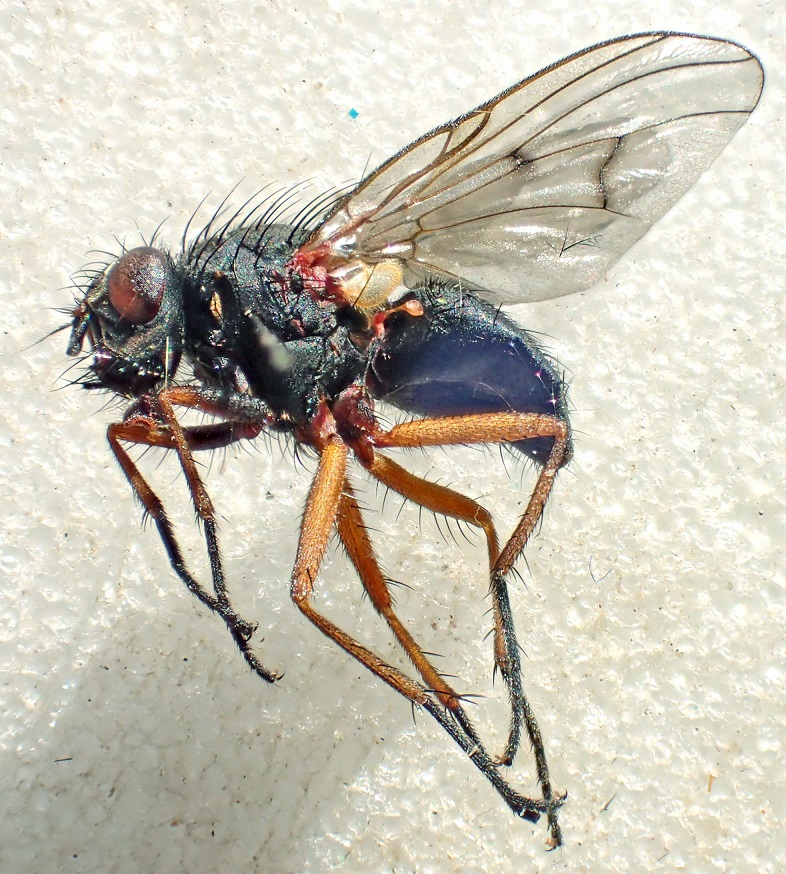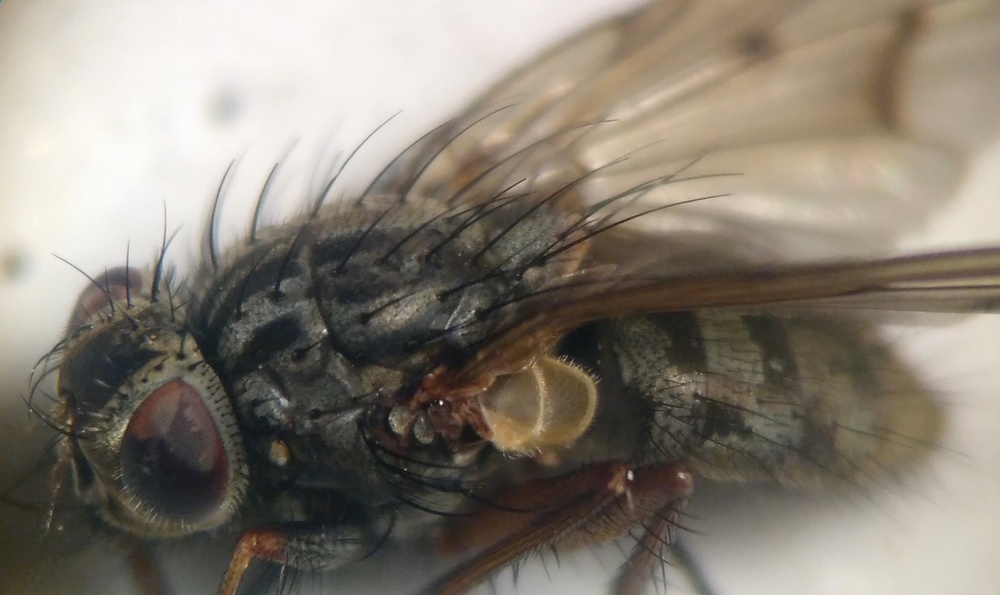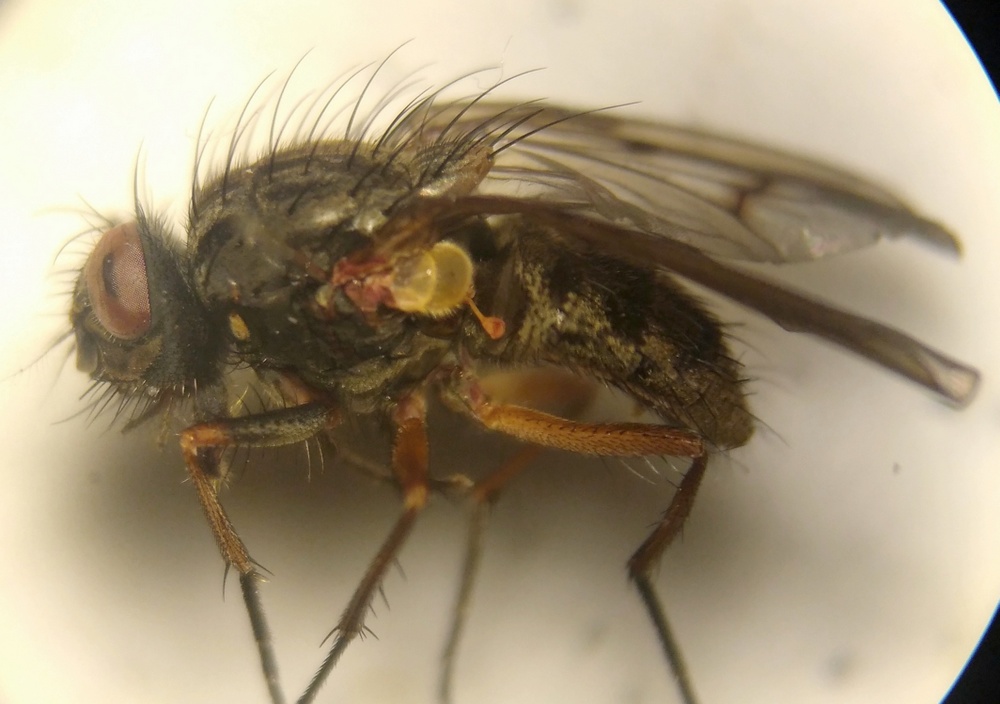I hope a muscid enthusiast can help with this identification. The nearest I can get with the Fonseca keys is Helina lasiophthalma, but I am not convinced. A notable feature is the reddish tip to the scutellum. Length 7.0 mm. It was caught at a lit window on 31 Oct last year in SW Worcestershire (SO777339).
Martin Skirrow ('Screw')
Comments
H.pubescens?
- Log in to post comments
Helina lasiophthalma quety
- Log in to post comments
Hi Ali,
Thank you very much for going to so much trouble. I have compared your photos with by fly and am convinced they are of the same species: pattern of leg colouration, thoracic dusting and bristles, and many other details. I cannot find any photos of H. pubescens on-line or anywhere else. Perhaps there is someone who can help. I note that pubescens is an uncommon species.
Martin
Do have another look at the…
- Log in to post comments
Do have another look at the hind tibia - your picture appears to show a posterodorsal, in which case Phaonia may provide a better route to identification.
Helina lasiophthalma quety
- Log in to post comments
Thanks Ali. I will be away for a couple of days, so will reassess when I get back.
Martin
Helina lasiophthalma quety
- Log in to post comments
Yes, it they look like P. tuguriorum and it all fits. Many thanks for your help.
Martin



Hi Martin
I have a recent specimen which looks very similar to that and keyed out to H.pubescens in both Fonseca and Frantiscek et al. I am not 100% convinced that is correct but both keys is a good sign ... or same mistake twice ...
Its front tibia has a posterior bristle clearly visible in this photo so it can't key out to lasiophthalma? If you start at couplet 58/61 and go to 61 (because abd and tibia bristles both don't match) then I think you end up same place as me
Cheers
Ali
My Fonseca keying:
Subfamilies:
4. Pteropleuron bare
5. Not Fanniidae
6. Palpi not spathulate
7. Not equilateral triangle katep.
-> Phaoniinae
Phaoniinae:
2. Discal not curved forward
4. Not Acanthiptera
10. Hind coxae bare posteriorly
12. Labella normal
28. Tib 3 no d/pd
30. Discal not curved forward (!)
31. Fem2 with well dev'd anterior apical, thoracic centrum pale stripe
33. Radial bare
34. Pre-alar well dev'd, 4 dk thoracic stripes
-> Helina
Helina:
6. Hypopleuron bare
20. Radial bare (upper and lower)
44. Tib3 no pd
48. No pre-sut acros
49. 4 post dcs
55. Sterno-Pl 2:1 (5F)
57. Arista plumose
61. Abd no paired spots
62. Eyes hairy
Scut tip yellow
Arista wide
X-veins distinctly infuscated
->H.pubescens